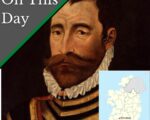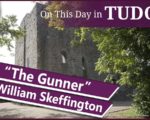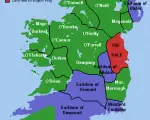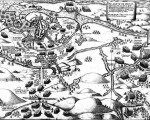
On this day in Tudor history, 13th August 1579, in the reign of Queen Elizabeth I, Roman Catholics Friar Conn (Connatius) O’Rourke and Patrick O’Healy, Bishop of Mayo, were hanged just outside Kilmallock, co. Limerick.
So desperate was Sir William Drury, Lord President of Munster, to get rid of these two Catholics, that he used martial law to find them guilty of treason, rather than giving them a trial.
What did Drury do to poor Bishop O’Healey, and what happened to the remains of these religious men afterwards?
[Read More...]


